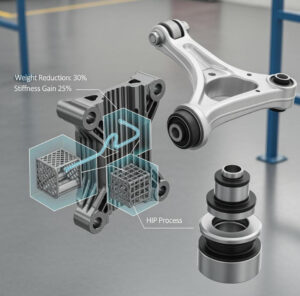selektiv smältning med elektronstråle
Innehållsförteckning
Föreställ dig att skapa komplexa metallföremål lager för lager, med oöverträffad precision och förmågan att hantera även de mest utmanande materialen. Det är magin med Selektiv elektronstrålesmältning (SEBM), en revolutionerande 3D-utskriftsteknik som förändrar hur vi designar och tillverkar metallkomponenter.
Vad är selektiv elektronstrålesmältning?
selektiv elektronstrålesmältning faller under paraplyet Additive Manufacturing (AM), även känd som 3D-utskrift. Det är en pulverbäddsfusionsteknik där en kraftfull elektronstråle selektivt smälter metallpulverpartiklar för att skapa ett 3D-objekt, ett lager i taget. Allt detta sker i en högvakuumkammare, vilket förhindrar oxidation och säkerställer en ren, högkvalitativ konstruktion.
Hur selektiv elektronstrålesmältning Verk
Tänk på SEBM som en mikroskopisk skulptör som använder en elektronstråle som sin mejsel. Här är en sammanfattning av processen:
- Förberedelse: En 3D-modell delas upp i tunna lager och bildar den digitala ritningen för objektet. Byggkammaren är fylld med ett fint lager av metallpulver specifikt för den önskade slutprodukten.
- Elektronstråleverkan: En fokuserad elektronstråle, genererad av en elektronpistol, skannar över pulverbädden enligt de skivade modelldata. Den höga energin hos strålen smälter de riktade pulverpartiklarna och smälter samman dem för att bilda det första lagret av objektet.
- Lager för lager: Byggplattformen sänks något och ett nytt lager pulver avsätts över det föregående lagret. Elektronstrålen skannar sedan igen, smälter selektivt de nya pulverpartiklarna och binder dem till den befintliga strukturen. Denna process upprepas noggrant och bygger objektet lager för lager tills det är klart.
- Kylning och borttagning: När konstruktionen är klar kyls kammaren ner och det slutliga föremålet avlägsnas försiktigt från det omgivande pulvret. Beroende på designen kan vissa efterbearbetningssteg som borttagning av stöd och ytbehandling vara nödvändiga.
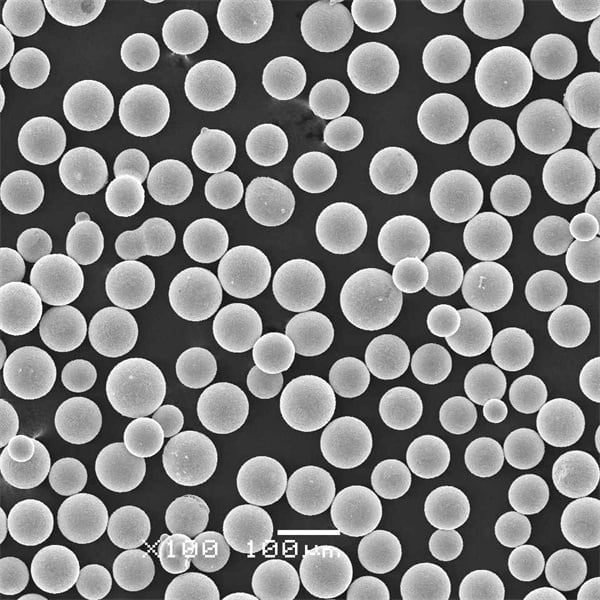
Gemensamma metallpulver för SEBM
| Metallpulver | Beskrivning | Fastigheter | Tillämpningar |
|---|---|---|---|
| Titanlegeringar (Ti-6Al-4V, Ti-6Al-7Nb) | SEBMs arbetshästar erbjuder utmärkt styrka-till-vikt-förhållande, biokompatibilitet och hög korrosionsbeständighet. | Stark, lätt, biokompatibel, korrosionsbeständig | Komponenter för flyg- och rymdindustrin, biomedicinska implantat, tandproteser |
| Rostfritt stål (316L, 17-4PH) | Mångsidig och allmänt använd, kända för sina utmärkta mekaniska egenskaper och korrosionsbeständighet. | Stark, duktil, korrosionsbeständig | Medicinska instrument, komponenter för vätskehantering, bildelar |
| Inconel (IN625, 718) | Superlegeringar kända för sin exceptionella styrka och motståndskraft mot höga temperaturer och tuffa miljöer. | Hållfasthet vid höga temperaturer, oxidationsbeständighet | Turbinblad, raketmotorkomponenter, värmeväxlare |
| Nickellegeringar (Monel 400, Hastelloy C-276) | Erbjuder överlägsen korrosionsbeständighet och presterar bra i utmanande kemiska miljöer. | Korrosionsbeständig, nötningsbeständig | Kemisk bearbetningsutrustning, ventiler, pumpar |
| Aluminiumlegeringar (AlSi10Mg, AlSi7Mg0,3) | Lätt och erbjuder god styrka och bearbetbarhet. | Lätt, stark, bearbetbar | Flygkomponenter, kylflänsar, bildelar (begränsad användning på grund av högre kostnad jämfört med traditionella metoder) |
| Koboltkrom (CoCrMo) | Biokompatibel och slitstark, ett populärt val för medicinska implantat. | Biokompatibel, slitstark | Höft- och knäproteser, tandimplantat |
| Kopparlegeringar (CuNi18Zn5Al, CuCr1Zr) | Erbjuder hög termisk och elektrisk ledningsförmåga, vilket gör dem idealiska för värmeväxlare och elektriska komponenter. | Hög värmeledningsförmåga, hög elektrisk ledningsförmåga | Kylflänsar, elektriska kontakter, lödmaterial |
| Verktygsstål (H13, AISI M2) | Känd för sin höga hårdhet och slitstyrka, perfekt för verktygstillämpningar. | Hård, slitstark | Skärande verktyg, matriser, formar |
| Ädelmetaller (guld, silver, platina) | Högt värde och unika egenskaper, som används för specialiserade applikationer inom smycken, elektronik och flyg. | Högt värde, bra elektrisk ledningsförmåga, biokompatibel (för specifika legeringar) | Smycken, elektriska kontakter, biomedicinska tillämpningar (begränsat) |
| Eldfasta metaller (tantal, volfram) | Erbjuder extremt höga smältpunkter och är idealiska för högtemperaturapplikationer. | Hög smältpunkt, hög hållfasthet vid |
Fördelar med Selektiv elektronstrålesmältning
SEBM har en rad fördelar som gör det till ett övertygande val för olika 3D-utskriftsapplikationer av metall. Låt oss fördjupa oss i några av dess viktigaste fördelar:
- Oöverträffad designfrihet: SEBM möjliggör skapandet av mycket komplexa geometrier med intrikata funktioner och interna kanaler, vilket skulle vara nästan omöjligt eller otroligt dyrt att uppnå med traditionella tillverkningsmetoder. Detta öppnar dörrar för innovativa och lätta design som tänjer på gränserna för funktionalitet.
- Exceptionella materialegenskaper: Högvakuummiljön och den exakta smältprocessen i SEBM leder till delar med utmärkta mekaniska egenskaper, inklusive hög hållfasthet, god duktilitet och enastående utmattningsbeständighet. Dessa egenskaper är ofta jämförbara eller till och med överlägsna de som uppnås genom traditionella tekniker som gjutning eller smide.
- Överlägsen noggrannhet och precision: Elektronstrålen i SEBM erbjuder exceptionell kontroll och precision, vilket resulterar i delar med snäva toleranser och slät ytfinish. Detta minskar behovet av omfattande efterbearbetning och minimerar materialspill.
- Materialeffektivitet: SEBM använder en pulverbäddsmetod, vilket innebär att oanvänt pulver kan återvinnas och återanvändas för efterföljande konstruktioner. Detta minimerar materialspill och erbjuder en mer hållbar produktionsmetod jämfört med traditionella subtraktiva tillverkningstekniker.
- Kortare ledtider: SEBM möjliggör snabb prototypframställning och produktion av komplexa metalldelar, vilket eliminerar behovet av komplexa verktyg och långa tillverkningsprocesser. Detta kan avsevärt minska ledtiderna och påskynda produktutvecklingscyklerna.
- Frihet att välja material: SEBM erbjuder ett bredare utbud av kompatibla metallpulver jämfört med andra 3D-utskriftstekniker av metall. Detta gör det möjligt att skapa delar från ett varierat urval av material med unika egenskaper, som tillgodoser specifika applikationskrav.
Nackdelar med selektiv elektronstrålesmältning
Även om SEBM erbjuder en uppsjö av fördelar, är det inte utan sina begränsningar. Här är en titt på några av nackdelarna att tänka på:
- Hög kostnad: SEBM-maskiner och tillhörande material tenderar att vara dyra jämfört med traditionella tillverkningsmetoder. Detta kan vara ett inträdeshinder för mindre företag eller de med begränsad budget.
- Begränsningar av byggstorleken: Nuvarande SEBM-maskiner har begränsningar för byggvolym, vilket begränsar storleken på delar som kan produceras. Men framsteg utökar kontinuerligt dessa möjligheter.
- Ytjämnhet: Även om SEBM erbjuder bra ytfinish, är de kanske inte så jämna som de som kan uppnås med vissa traditionella bearbetningstekniker. Ytterligare efterbearbetningssteg kan behövas för applikationer som kräver en mycket polerad ytfinish.
- Stödstrukturer: I likhet med andra 3D-utskriftstekniker kräver SEBM ofta användning av stödstrukturer för överhängande funktioner. Dessa stöd måste tas bort efter bygget, vilket kan vara en tidskrävande och potentiellt känslig process.
- Begränsat antal färgalternativ: Till skillnad från vissa andra 3D-utskriftsteknologier är SEBM främst inriktat på funktionella applikationer och erbjuder inte ett brett utbud av färgalternativ för de färdiga delarna.
Tillämpningar av Selektiv elektronstrålesmältning
SEBM:s unika kapacitet gör det till ett värdefullt verktyg för olika branscher. Här är några framträdande applikationer:
- Aerospace: De lätta och höghållfasta egenskaperna hos SEBM-tillverkade delar gör dem idealiska för flyg- och rymdtillämpningar. Komponenter som landningsställsdelar, missilfenor och lättviktsfästen kan skapas med intrikata design för att optimera prestanda och viktminskning.
- Medicintekniska produkter: Biokompatibiliteten hos vissa metallpulver, tillsammans med precisionen hos SEBM, möjliggör skapandet av skräddarsydda medicinska implantat, såsom höft- och knäproteser, tandproteser och kranialimplantat. Dessa implantat erbjuder utmärkt biokompatibilitet och kan skräddarsys efter individuella patientbehov.
- Fordon: SEBM används alltmer inom bilindustrin för att producera högpresterande komponenter som lätta kolvar, komplexa kylkanaler i motorblock och specialanpassade växlar och axlar. Detta möjliggör viktminskning, förbättrad effektivitet och förbättrad prestanda.
- Energisektorn: SEBM används för att skapa mycket motståndskraftiga komponenter för turbinblad och värmeväxlare som används i kraftgenerering på grund av förmågan att använda högtemperaturlegeringar med utmärkta mekaniska egenskaper.
- Verktyg: SEBM kan producera komplexa skärverktyg och stansar med intrikata geometrier och hög slitstyrka. Detta möjliggör skapandet av specialiserade verktyg för specifika applikationer och minskar produktionsledtiderna.
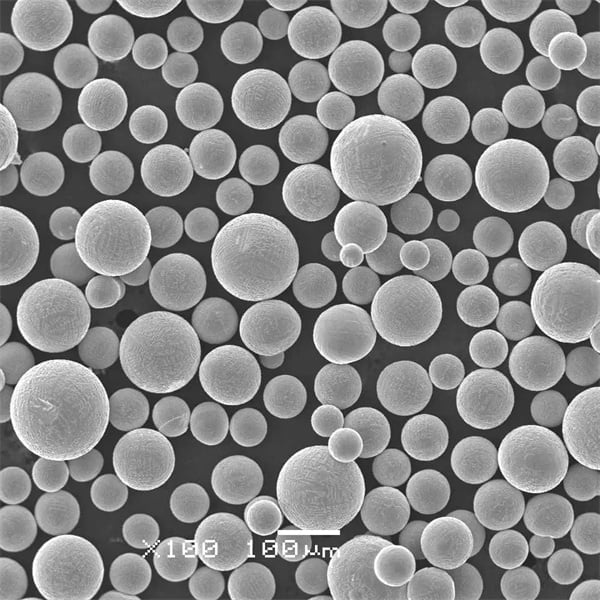
SEBM metallpulver
Vi har utforskat de vanliga metallpulver som används i SEBM, men låt oss gräva lite djupare in i några nyckelfaktorer att tänka på när du väljer rätt pulver för din specifika applikation:
- Partikelstorlek och fördelning: Storleken och fördelningen av pulverpartiklarna påverkar avsevärt de slutliga egenskaperna hos den tryckta delen. Finare puder resulterar i allmänhet i jämnare ytfinish men kan vara mer utmanande att arbeta med på grund av flytbarhetsproblem. Omvänt ger grövre pulver bättre flytbarhet men kan leda till en grövre ytfinish.
- Pulver Renhet: Metallpulvrets renhet påverkar direkt de mekaniska egenskaperna hos den färdiga delen. Föroreningar kan försvaga materialet och leda till sprickor eller andra defekter. Pulver med hög renhet är avgörande för kritiska applikationer som kräver optimal prestanda.
- Sfäricitet och flytbarhet: Idealiskt bör metallpulver för SEBM vara sfäriska till formen för att säkerställa god flytbarhet i byggkammaren. God flytbarhet möjliggör jämn pulverfördelning och konsekvent smältning under byggprocessen.
- Kemisk sammansättning: Pulvrets specifika kemiska sammansättning avgör de slutliga egenskaperna hos den tryckta delen. Tänk på faktorer som legeringsämnen, spårämnen och syrehalt när du väljer ett pulver för din önskade applikation.
Här är en tabell som sammanfattar några viktiga överväganden för SEBM-metallpulver:
| Faktor | Beskrivning | Påverkan |
|---|---|---|
| Partikelstorlek och fördelning | Storleken och spridningen av pulverpartiklar. | Påverkar ytfinish, densitet och mekaniska egenskaper. |
| Pulverets renhet | Frånvaron av föroreningar i metallpulvret. | Påverkar mekanisk styrka och minskar risken för defekter. |
| Sfäricitet och flytbarhet | Den rundhet och lätthet med vilken pudret flyter. | Påverkar lagerkvalitet, täthet och övergripande framgång. |
| Kemisk sammansättning | De specifika elementen och deras proportioner i pulvret. | Bestämmer slutliga materialegenskaper som styrka, korrosionsbeständighet och prestanda vid hög temperatur. |
Specifikationer, storlekar, kvaliteter och standarder för SEBM-metallpulver
Metallpulver för SEBM följer specifika industristandarder för att säkerställa konsekvent kvalitet och tryckbarhet. Här är en översikt över några viktiga aspekter:
- ASTM International (ASTM): ASTM publicerar olika standarder för metallpulver som används vid additiv tillverkning, inklusive ASTM F3049 för metallpulver för AM och ASTM B294 för titan- och titanlegeringspulver.
- Materialdatablad (MDS): Metallpulverleverantörer tillhandahåller vanligtvis materialdatablad (MDS) som beskriver de specifika egenskaperna och egenskaperna hos deras pulver, såsom kemisk sammansättning, partikelstorleksfördelning, skenbar densitet och flytbarhet.
- Puderkvaliteter: Metallpulver för SEBM finns i olika kvaliteter beroende på applikationskraven. Högre renhetsgrader kan vara nödvändiga för kritiska applikationer som kräver exceptionella mekaniska egenskaper.
- Tillgänglighet i pulverstorlek: Storleken på metallpulver för SEBM varierar vanligtvis från 15 till 150 mikron. Den specifika storleken som väljs beror på önskad ytfinish, packningsdensitet och mekaniska egenskaper hos den slutliga delen.
Leverantörer och prissättning av SEBM Metal Powders
Tillgängligheten och prissättningen för SEBM-metallpulver kan variera beroende på det specifika materialet, pulverkvaliteten och beställningskvantiteten. Här är en allmän uppdelning:
- Leverantörer av metallpulver: Flera företag är specialiserade på att leverera metallpulver för additiv tillverkning, däribland Höganäs AB, AP Powder Company, AMPO LLC, LPW Technology och Sandvik Hyperion.
- Prissättning: Kostnaden för metallpulver för SEBM kan variera från $50 till $500 per kilo beroende på material, pulverkvalitet och leverantör. I allmänhet kräver högre renhet pulver och exotiska material ett premiumpris.
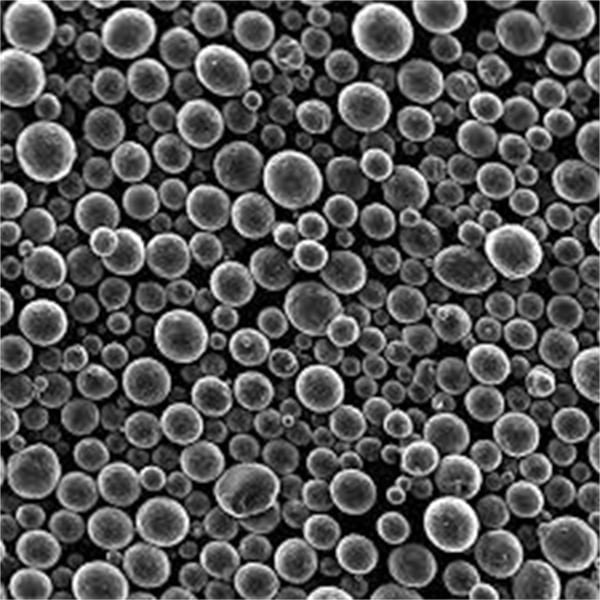
VANLIGA FRÅGOR
Här är några vanliga frågor (FAQ) om Selektiv elektronstrålesmältning (SEBM):
| Fråga | Svar |
|---|---|
| Vilka är fördelarna med SEBM framför andra 3D-utskriftstekniker av metall? | SEBM erbjuder överlägsen designfrihet, exceptionella materialegenskaper, hög noggrannhet och precision, materialeffektivitet och materialvalsfrihet jämfört med vissa andra 3D-utskriftsmetoder av metall. |
| Vilka är begränsningarna för SEBM? | SEBM kan vara dyrt på grund av maskin- och materialkostnader, har begränsningar i byggstorlek, kan kräva ytterligare efterbearbetning för ytfinish, behöver stödstrukturer för vissa konstruktioner och erbjuder begränsade färgalternativ. |
| Vilka branscher använder SEBM? | SEBM används i olika industrier, inklusive flyg, medicinsk utrustning, fordon, energi och verktyg. |
| Vilka är några vanliga metallpulver som används i SEBM? | Vanliga metallpulver för SEBM inkluderar titanlegeringar, rostfritt stål, Inconel, nickellegeringar, aluminiumlegeringar, kobolt |
Dela på
MET3DP Technology Co, LTD är en ledande leverantör av lösningar för additiv tillverkning med huvudkontor i Qingdao, Kina. Vårt företag är specialiserat på 3D-utskriftsutrustning och högpresterande metallpulver för industriella tillämpningar.
Förfrågan för att få bästa pris och anpassad lösning för ditt företag!
Relaterade artiklar
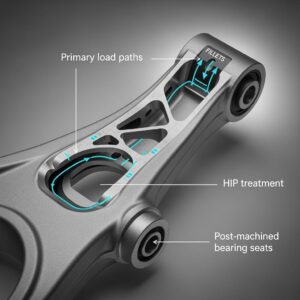
Metal 3D Printing for U.S. Automotive Lightweight Structural Brackets and Suspension Components
Läs mer "Om Met3DP
Senaste uppdateringen
Vår produkt
KONTAKTA OSS
Har du några frågor? Skicka oss meddelande nu! Vi kommer att betjäna din begäran med ett helt team efter att ha fått ditt meddelande.















